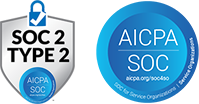What Is Applicant Tracking Systems (ATS)?
An Applicant Tracking System (ATS) is recruiting software that centralizes job postings, résumé intake, and candidate evaluation into one platform. It parses resumes for skills and experience, ranks candidates against role requirements, and automates communications—replacing manual spreadsheets and fragmented email threads.
Why Applicant Tracking Systems (ATS) Matters
Without an ATS, recruiters juggle high résumé volumes and risk missing qualified talent. ATS platforms cut time-to-hire by automating screening and scheduling, enforce equal-employment-opportunity compliance with audit trails, and provide data-driven insights on funnel conversions—boosting efficiency and fairness.
Where Applicant Tracking Systems (ATS) Is Used
- Corporate Talent Acquisition: Managing roles across departments and locations with standardized workflows.
- Staffing & Recruiting Agencies: Coordinating multiple client requisitions and candidate pipelines.
- Small to Mid-Size Businesses: Streamlining limited HR resources and maintaining compliant records.
- Remote & Global Hiring: Aligning interview schedules across time zones and consolidating applicant data.
- Campus & Early-Career Programs: Capturing and nurturing entry-level talent from career fairs and events.
Applicant Tracking Systems (ATS) Key Benefits
- Centralized Database: One source of truth for all candidate profiles and communications.
- Automated Screening: Keyword and Boolean parsing highlights best-fit applicants.
- Consistent Workflows: Predefined stages ensure every requisition follows the same process.
- Compliance & Reporting: Built-in audit logs for equal-employment-opportunity and hiring metrics.
- Enhanced Candidate Experience: Automated status updates and self-service portals improve engagement.
Best Practices & Examples
- Structured Job Templates: Define required fields (skills, experience) to improve parsing accuracy.
- Keyword Taxonomy: Maintain a curated list of role-specific keywords and synonyms.
- Collaborative Feedback: Collect hiring-manager ratings within the ATS to avoid siloed emails.
- Mobile-Friendly Apply: Ensure the application process is smooth on smartphones and tablets.
- Systems Integration: Link the ATS to background-check, assessment, and payroll tools for end-to-end workflows.
Conclusion
An effective ATS transforms hiring from manual résumé sorting into a strategic, data-driven process. By automating screening, enforcing consistent workflows, and offering robust reporting, organizations accelerate talent acquisition, uphold compliance, and deliver a superior candidate journey.
Applicant Tracking Systems (ATS) FAQs
Q: What is applicant tracking systems or ATS?
An ATS is software that collects job applications, parses résumé data for key qualifications, and manages candidate workflows—from screening and interview scheduling to offer letters—within a single, searchable dashboard.
Q: Which ATS tool is the best?
The “best” ATS depends on organizational needs: Greenhouse excels at integrations, Lever offers strong candidate-relationship features, iCIMS serves large enterprises, and BambooHR ATS suits smaller teams seeking simplicity and affordability.
Q: What does ATS mean?
ATS stands for Applicant Tracking System—a recruiting platform that automates job posting, résumé intake, candidate screening, interview coordination, and hiring analytics to streamline talent acquisition.
Q: What is ATS software used for?
ATS software is used for posting job openings, parsing and scoring résumés, tracking candidate interactions, managing interview schedules, and generating compliance and performance reports on hiring processes.
Q: Applicant tracking system examples?
Examples include Greenhouse, Lever, iCIMS, Workday Recruiting, BambooHR ATS, JazzHR, and SmartRecruiters—each offering varying degrees of customization, integrations, and analytics for different business sizes.
Q: Applicant tracking system free?
Free or freemium ATS options include Zoho Recruit (free tier) and Recruitee’s starter plan, offering basic résumé parsing, pipeline management, and email templates ideal for small teams with modest hiring volumes.
Q: ATS resume checker?
An ATS résumé checker is a tool that evaluates résumés against specific job descriptions, highlighting missing keywords, formatting issues, and section headings to improve parsing accuracy and ranking within an ATS.
Q: Applicant tracking systems list?
A comprehensive list includes Greenhouse, Lever, iCIMS, Workday Recruiting, JazzHR, SmartRecruiters, BambooHR ATS, Oracle Taleo Cloud, and Bullhorn—covering small to enterprise-grade solutions.
Q: ATS software?
ATS software refers broadly to any platform designed to automate recruiting tasks—job distribution, résumé parsing, candidate screening, interview workflow, and hiring analytics—to centralize and optimize talent acquisition.
Q: ATS resume full form?
In this context, “ATS résumé” implies a résumé formatted for Applicant Tracking Systems—using clear headings, standard fonts, and relevant keywords to ensure accurate parsing and matching.
Q: Applicant Tracking system checker?
An ATS checker is an online service that assesses a résumé’s compatibility with ATS parsing rules—evaluating keyword usage, formatting, and file type to predict parsing success and improve candidate ranking.
Q: Best applicant tracking systems for recruiters?
Top recruiter-focused ATS include Greenhouse for rich integrations, Lever for candidate relationship workflows, and Bullhorn for staffing agencies requiring strong client and job-order management.



